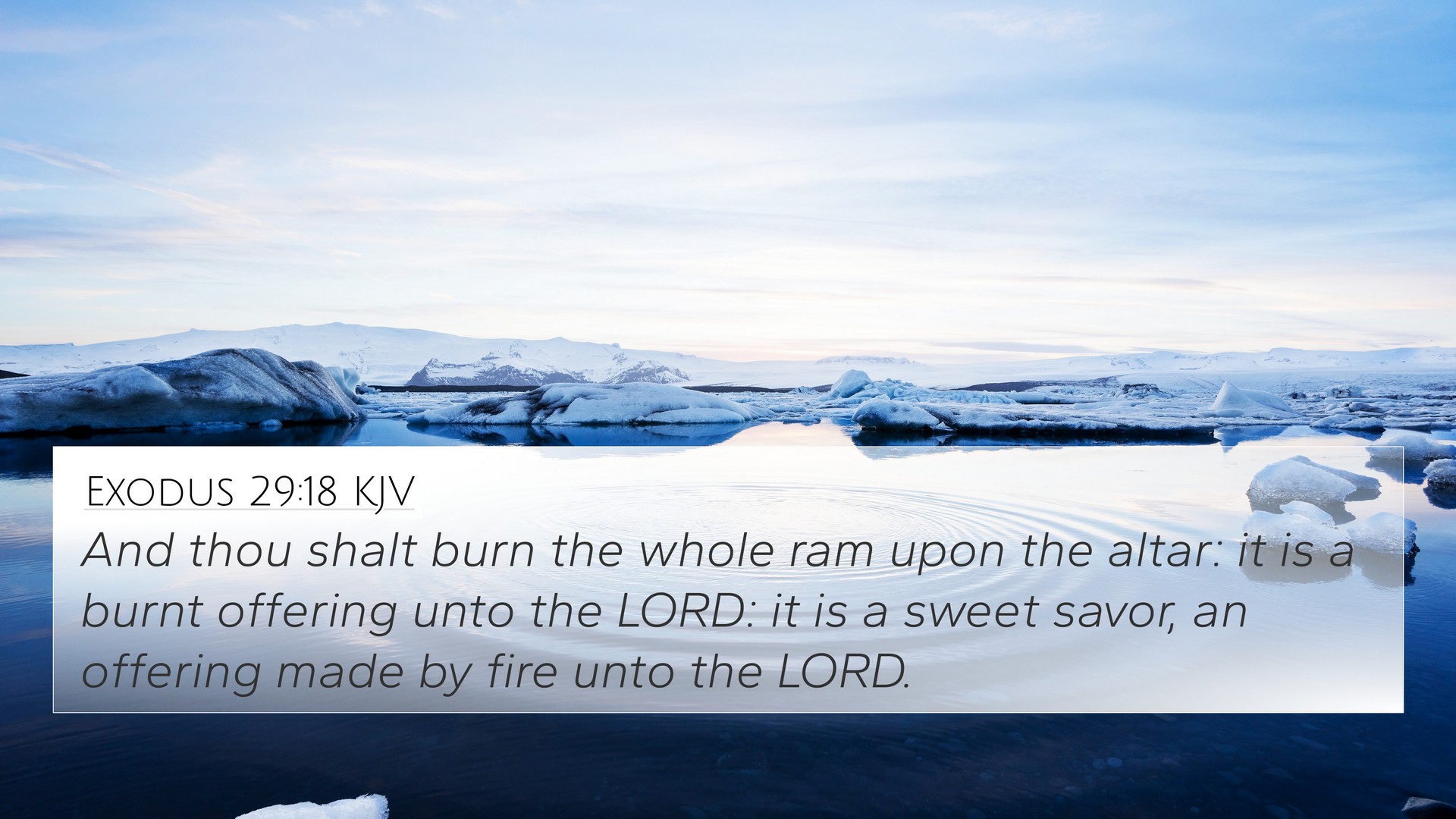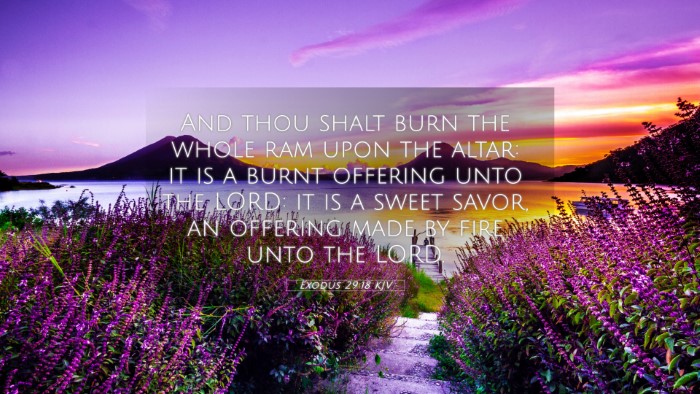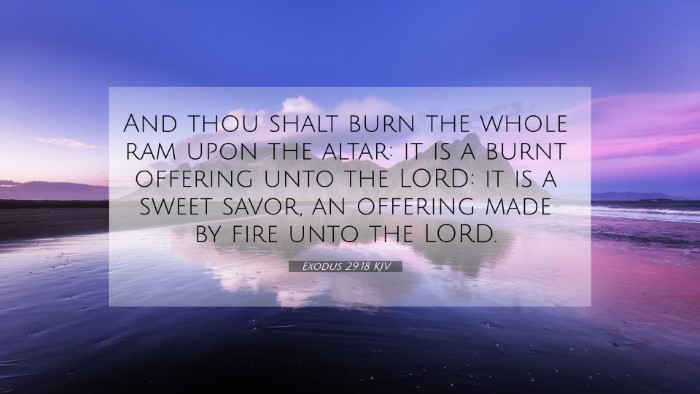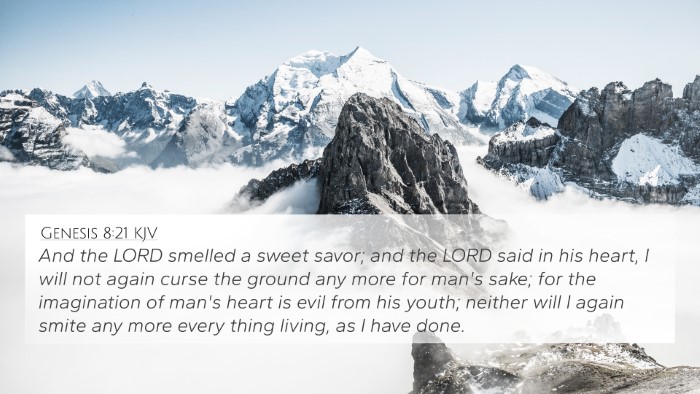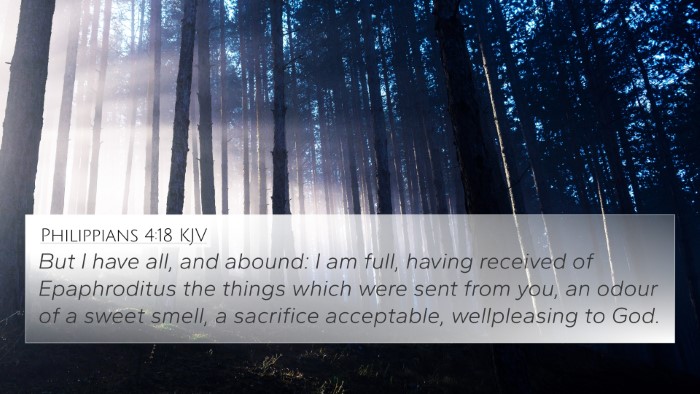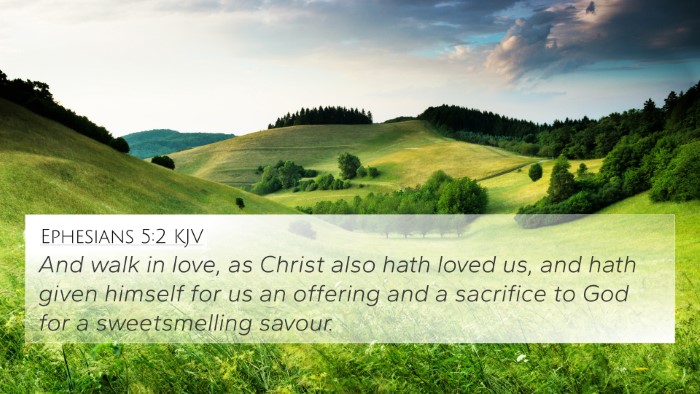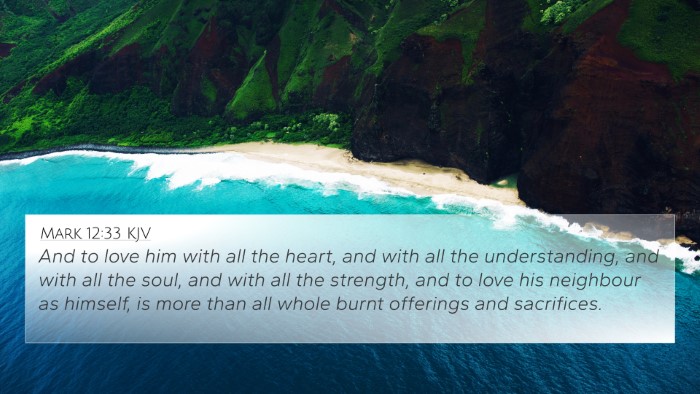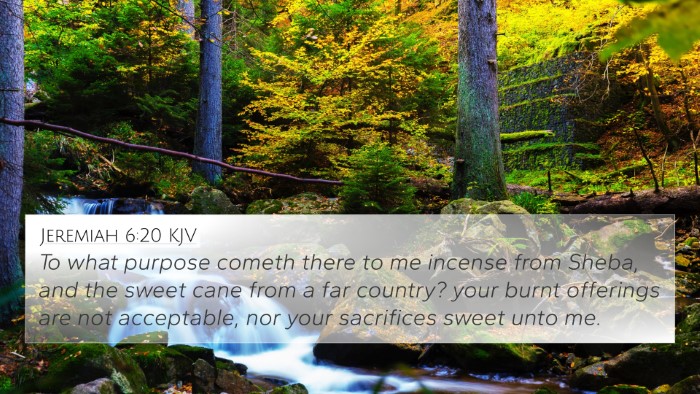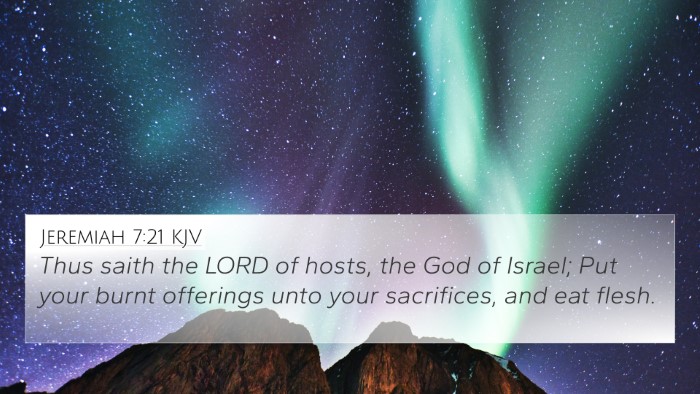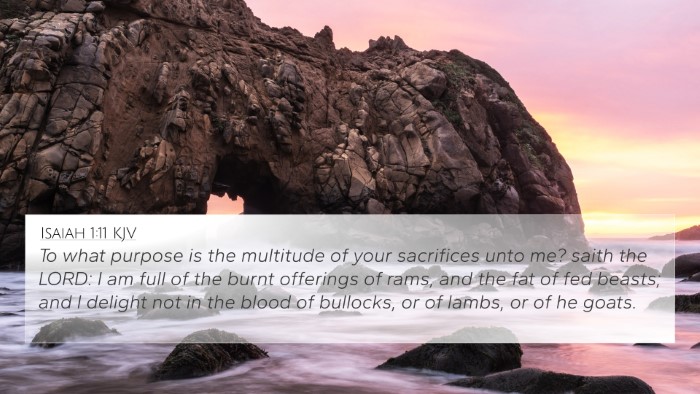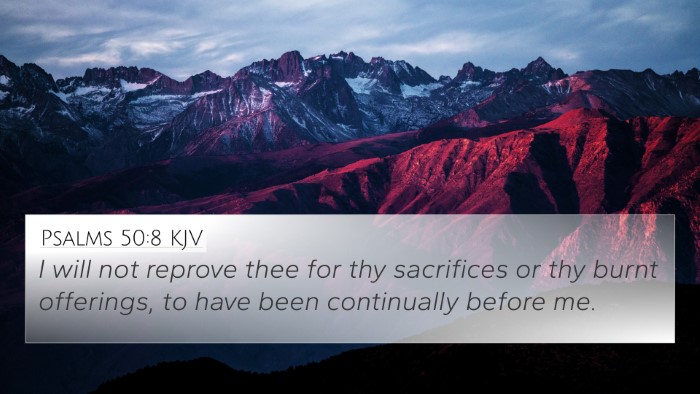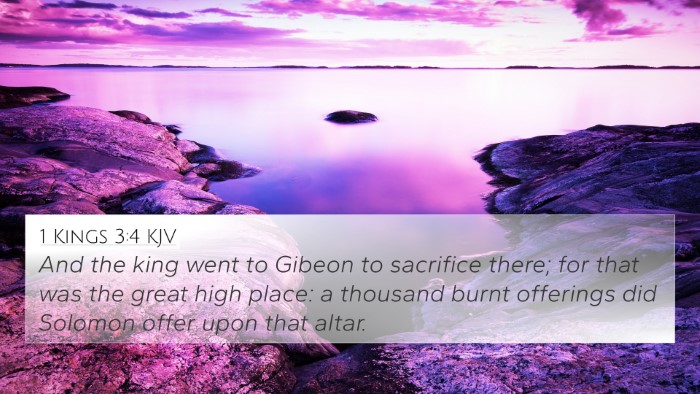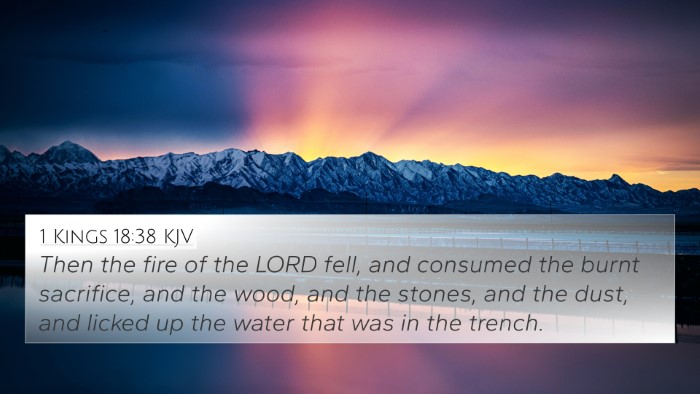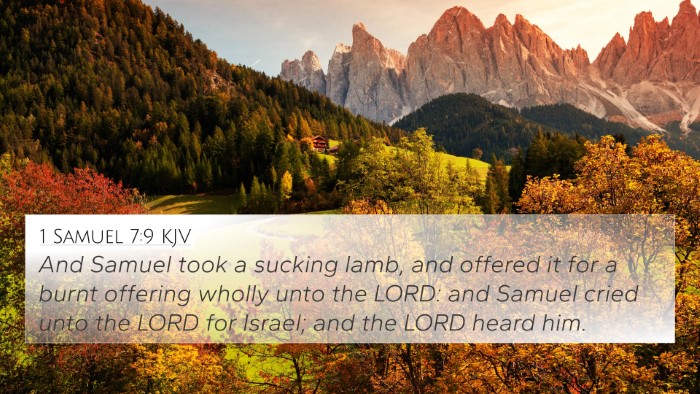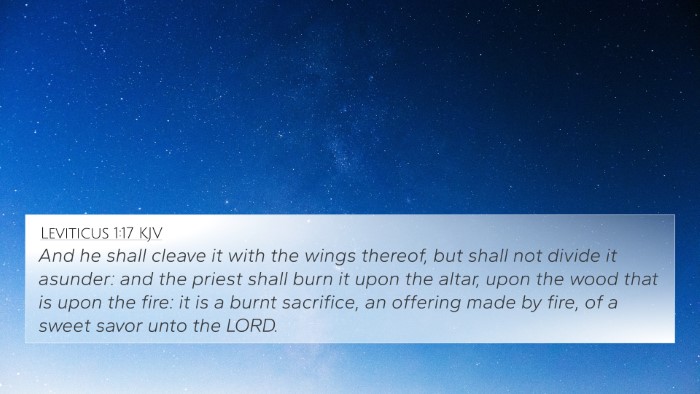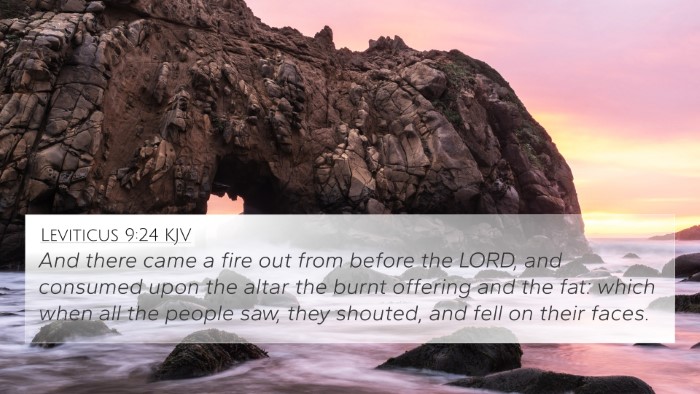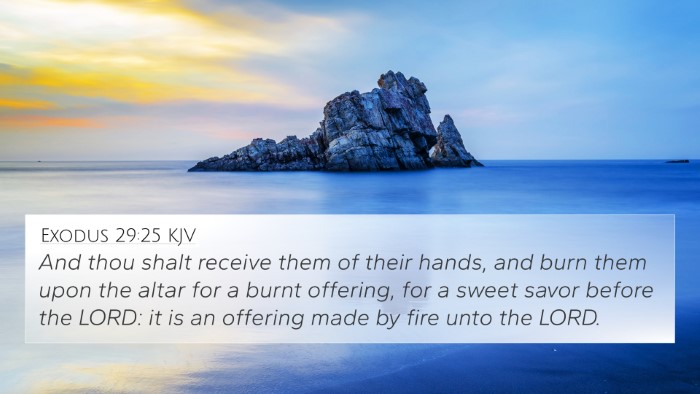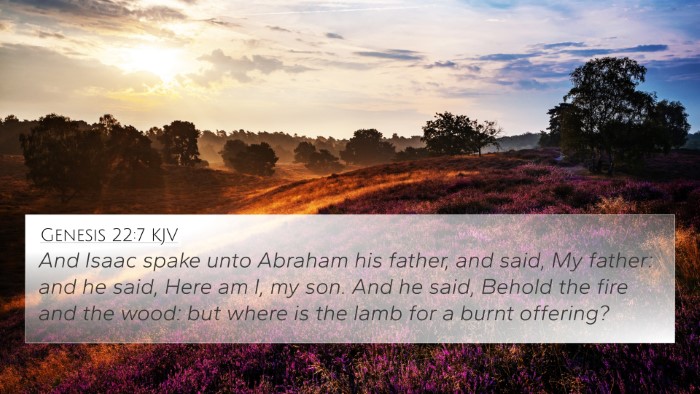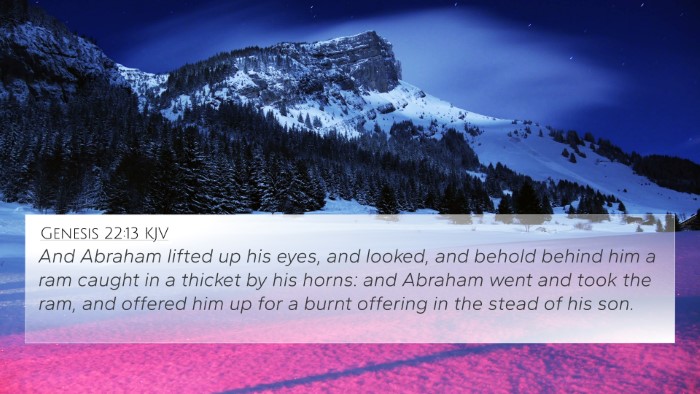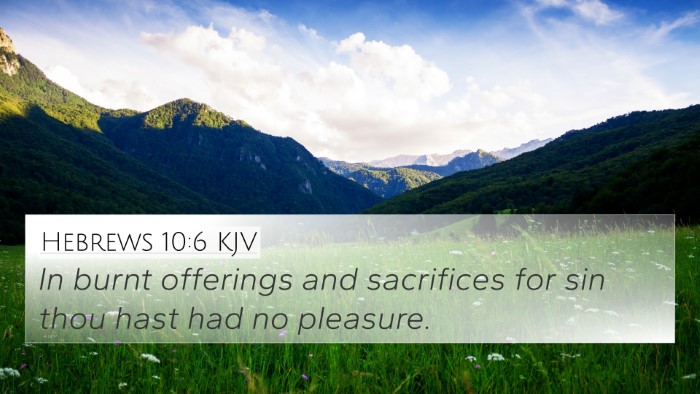Understanding Exodus 29:18
Exodus 29:18 states:
"And thou shalt burn the whole ram upon the altar: it is a burnt offering unto the LORD: it is a sweet savour, an offering made by fire unto the LORD."
This verse is part of the instructions given to Moses regarding the consecration of Aaron and his sons as priests. It specifically pertains to the ritual of offering and symbolizes several important themes within the Bible.
1. Significance of the Whole Burnt Offering
According to Matthew Henry, the burnt offering represents total devotion to God. The act of burning the whole ram signifies the complete surrender of oneself to God’s service. This offering serves as an expression of worship and acknowledgment of God’s holiness, further emphasized by the fact that it produces a "sweet savour" to the LORD.
2. Symbolism of the Ram
Albert Barnes notes that the ram is presented as a sacrificial animal often associated with atonement and substitution. In this context, it typifies Jesus Christ as the ultimate sacrifice for humanity, linking the Old Testament practices with the New Testament fulfillment.
3. The Role of the Priesthood
Adam Clarke elaborates on the importance of the priestly function, indicating that this ritual is foundational for establishing the Levitical priesthood. The sacrifice highlights not only the need for atonement but also the priest's role as a mediator between God and the people.
4. God’s Satisfaction with Offerings
The phrase "a sweet savour" illustrates God's acceptance of the sacrifice. It suggests that when the offerings are made in accordance with God’s commands, they evoke His favor, establishing connections between obedience and divine blessing.
5. Cross-References to Exodus 29:18
- Leviticus 1:9 - Discusses the burnt offering and emphasizes its purpose of pleasing the LORD.
- Genesis 8:21 - Mentions the aroma of sacrifices being pleasing to God after Noah’s flood.
- Hebrews 10:12 - Points out that Christ's single offering has perfected forever those who are being sanctified, paralleling the idea of sacrificial offerings.
- Romans 12:1 - Encourages believers to present their bodies as living sacrifices, drawing a thematic line to the sacrificial system.
- 1 Peter 2:5 - Describes believers as living stones being built up into a spiritual house, offering spiritual sacrifices acceptable to God.
- John 1:29 - Refers to Jesus as the "Lamb of God" who takes away the sins of the world, linking to the sacrificial themes.
- Isaiah 53:5 - Speaks of the suffering Servant who was wounded for our transgressions, highlighting the atonement aspect of sacrifice.
6. Thematic Connections
This passage illustrates major themes such as:
- Atonement - The act of sacrificing an animal represents atonement for sin.
- Obedience - Following God’s command in these rituals reflects the importance of obedience to divine instructions.
- Worship - The burnt offering is an act of worship that signifies the proper attitude toward God.
- Divine Presence - The ritual establishes a means for God to reside among His people, reinforcing the idea of relational holiness.
7. Conclusion
Exodus 29:18 serves as a powerful reminder of the importance of sacrifice, worship, and the priestly role in mediating between God and humanity. Understanding this verse invites believers to engage with the entirety of scripture through cross-referencing Biblical texts, enhancing the depth of one’s faith and comprehension of God’s redemptive plan.
Through the exploration of this verse, we find rich connections between texts, aligning thematically across both the Old and New Testaments. Tools for Bible cross-referencing, such as concordances or Bible study guides, may aid in further understanding of such connections. For those undertaking the journey of identifying connections between scripture, Exodus 29:18 is a significant verse that bridges ancient practices with contemporary faith expressions.
